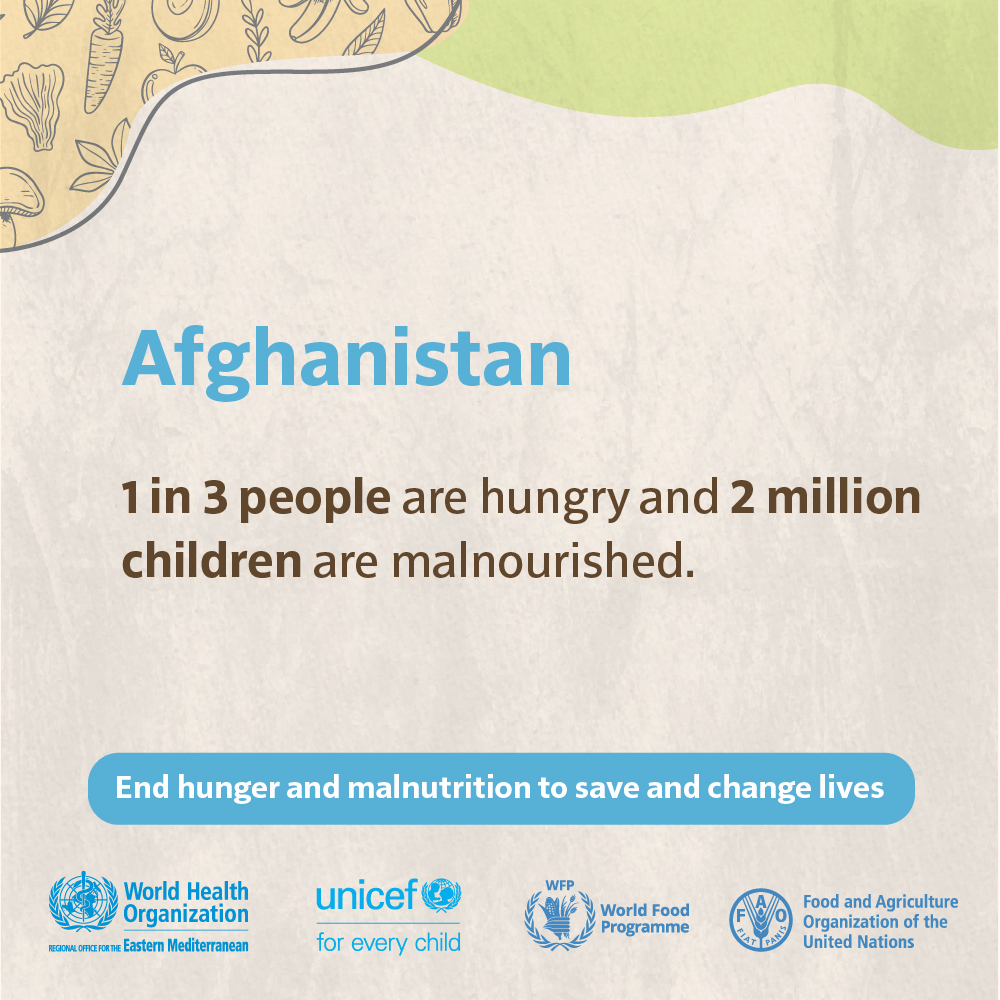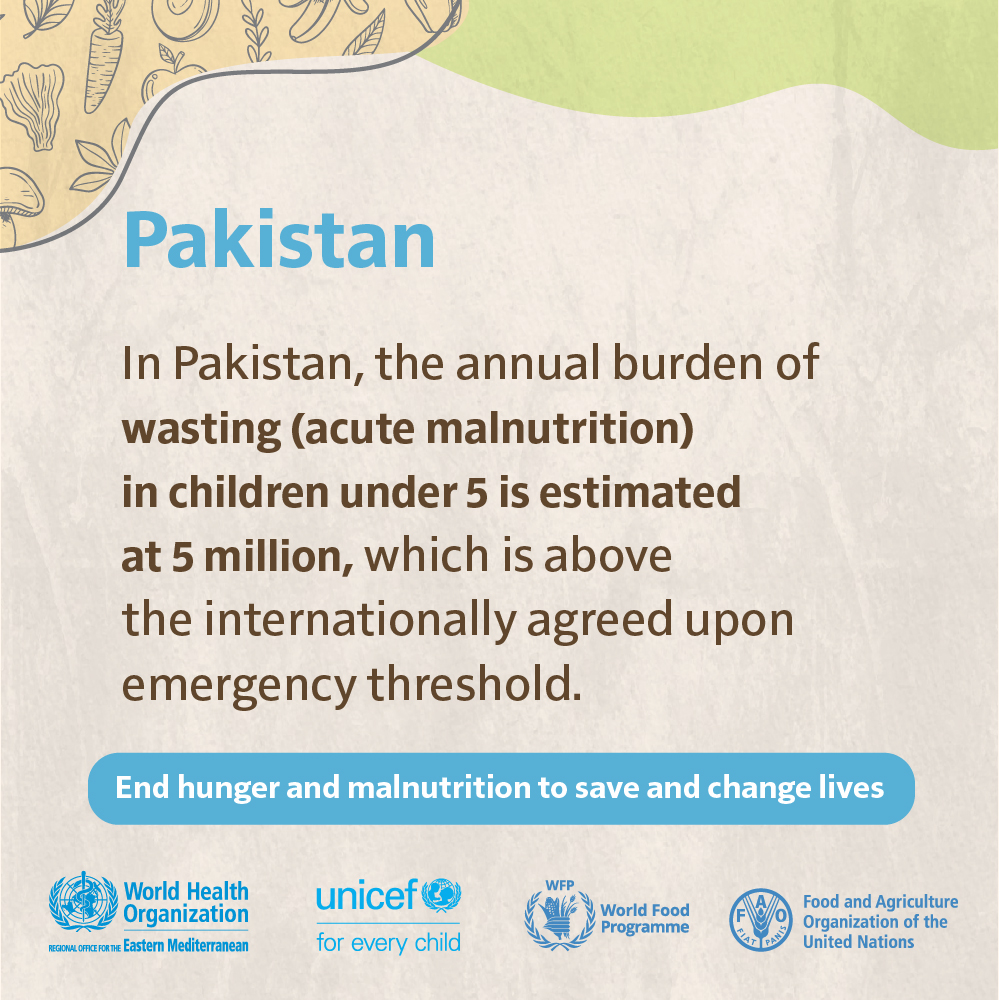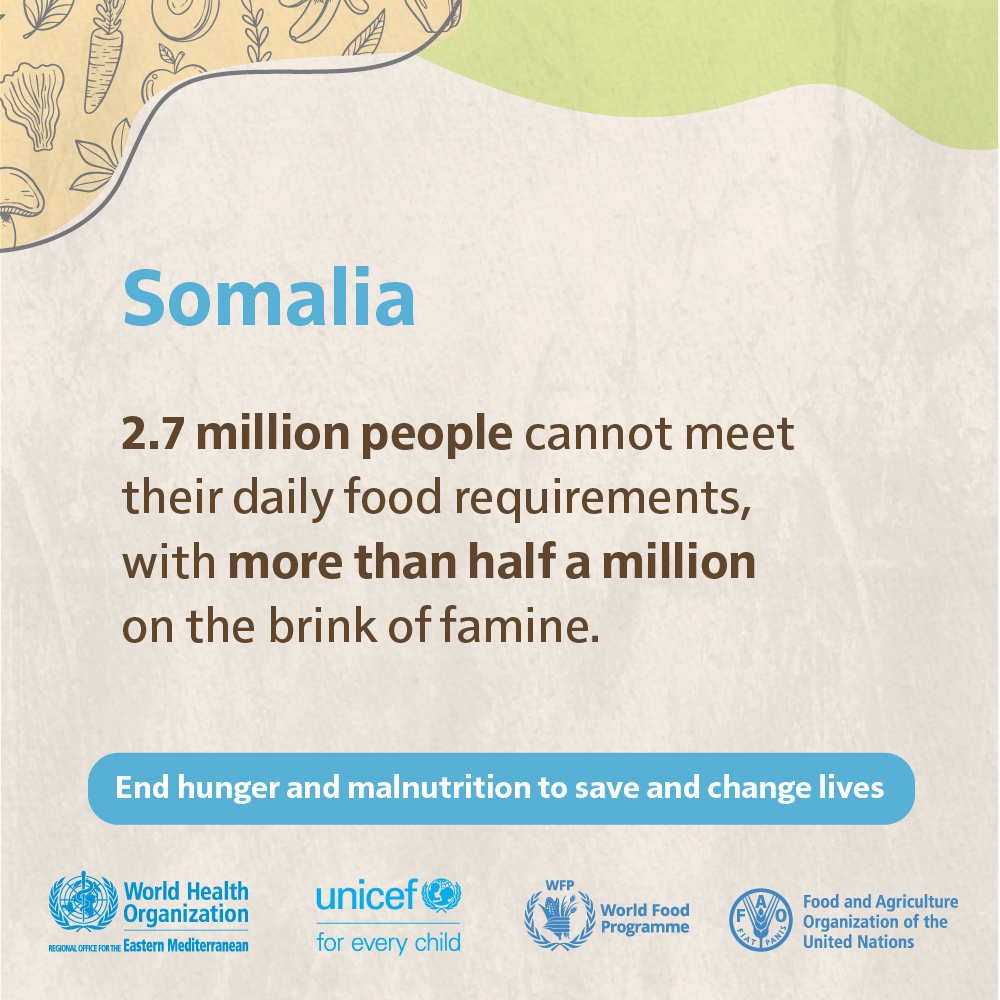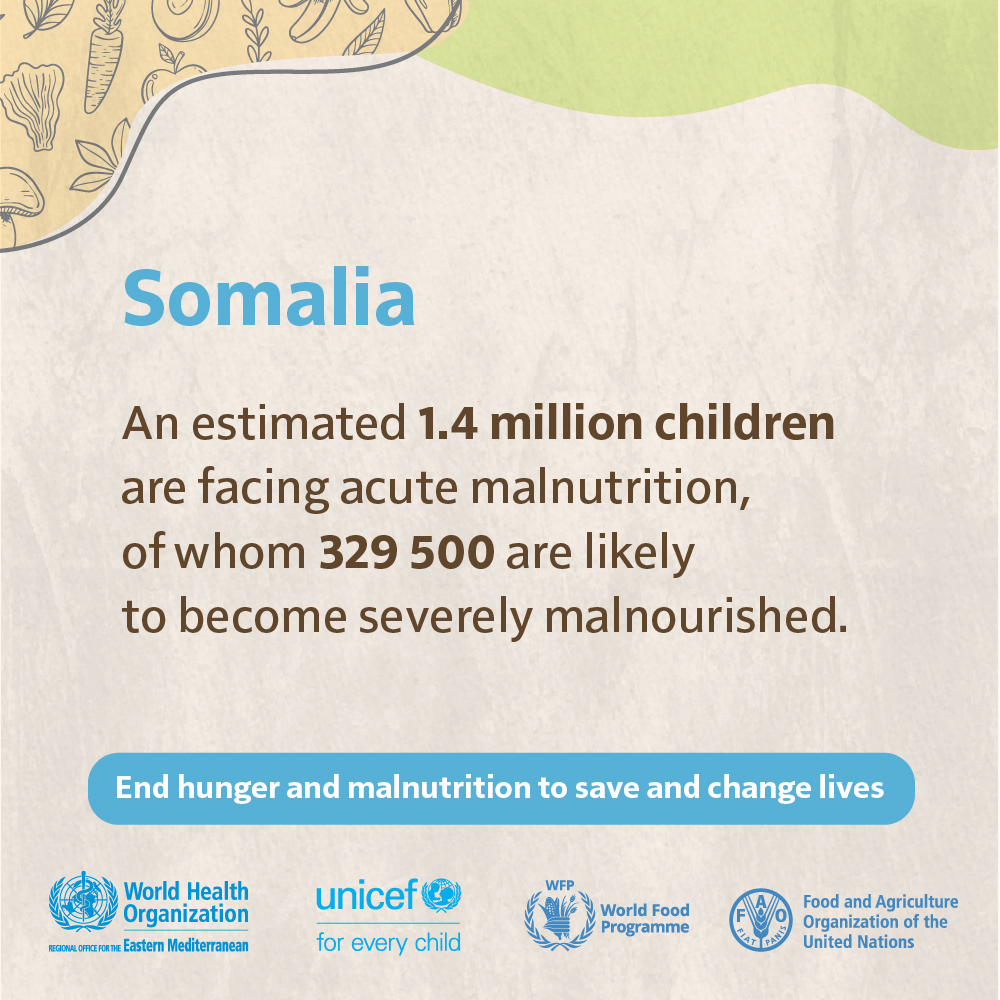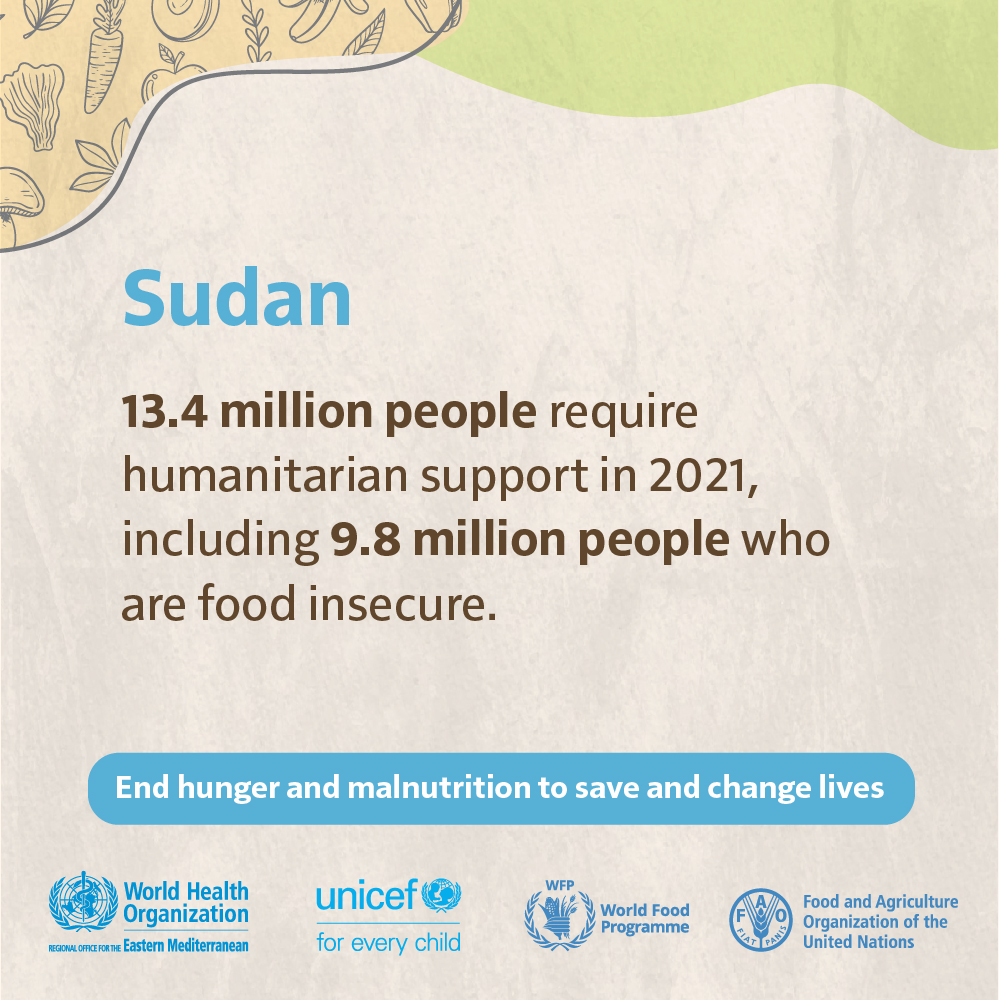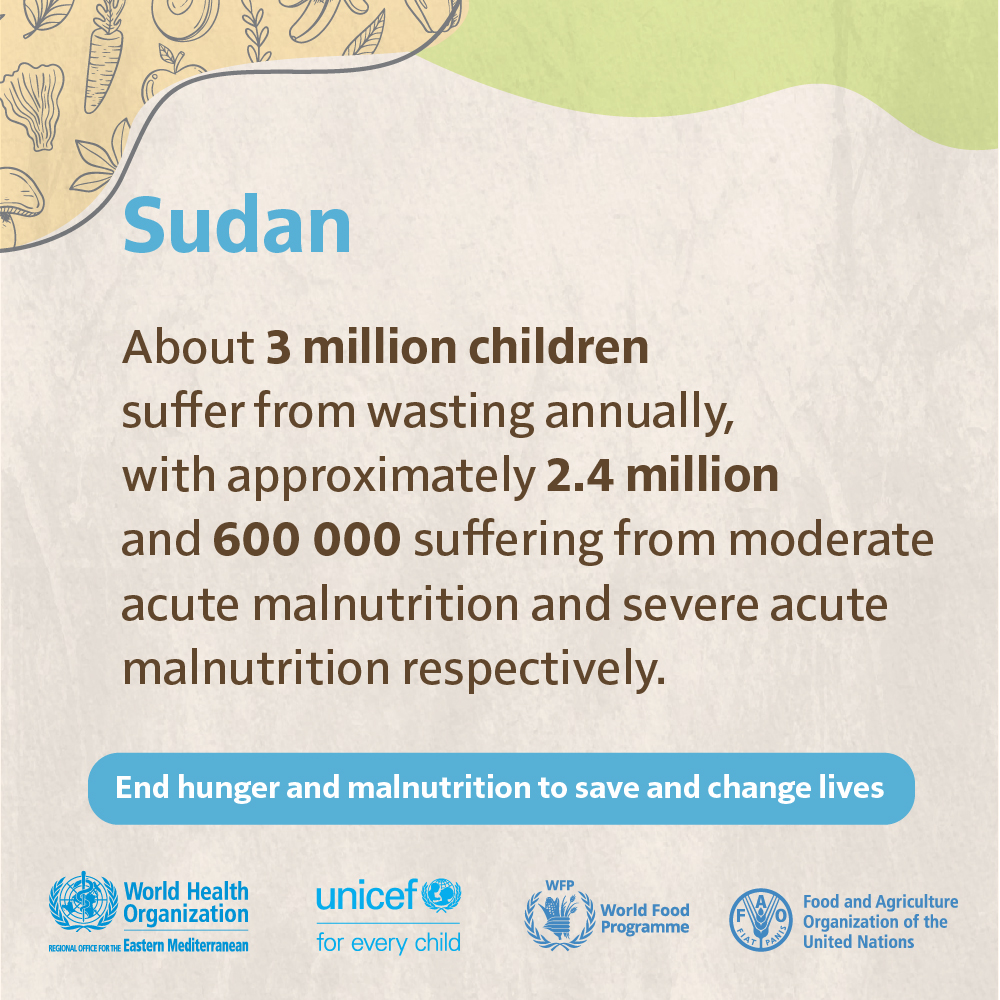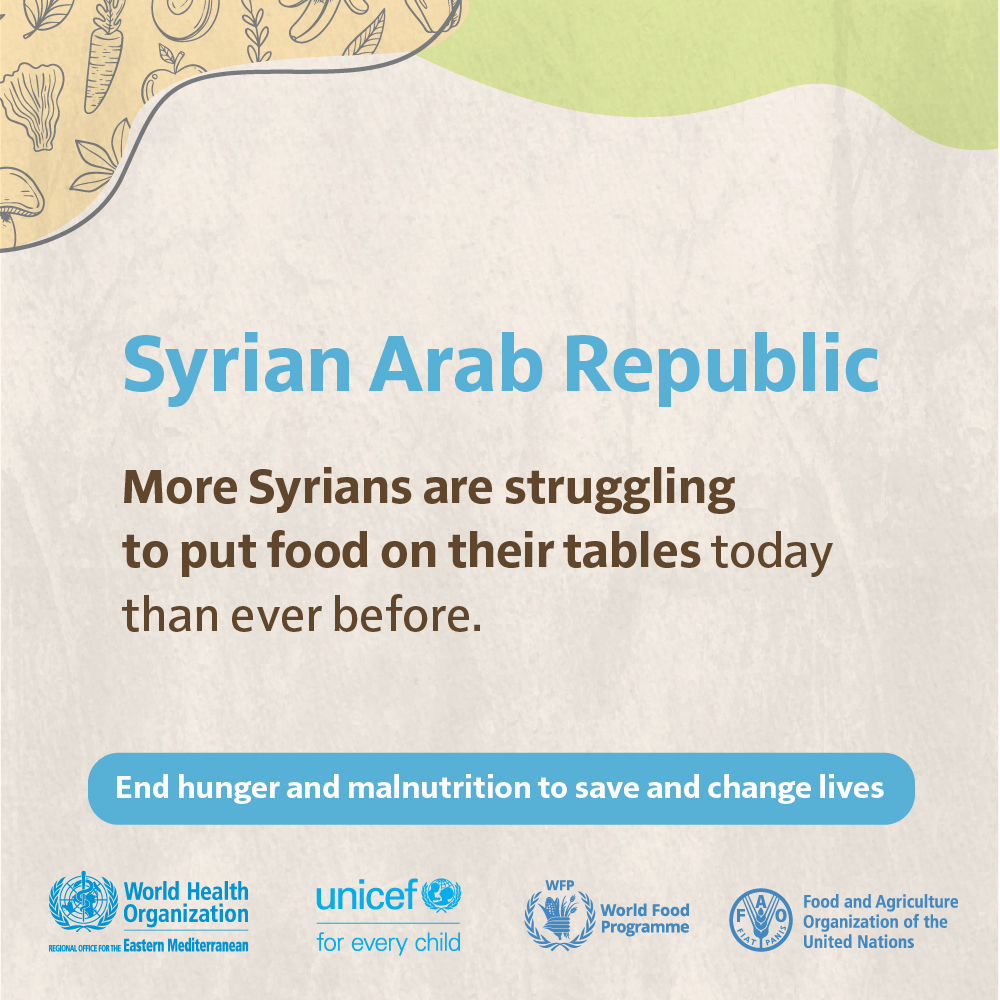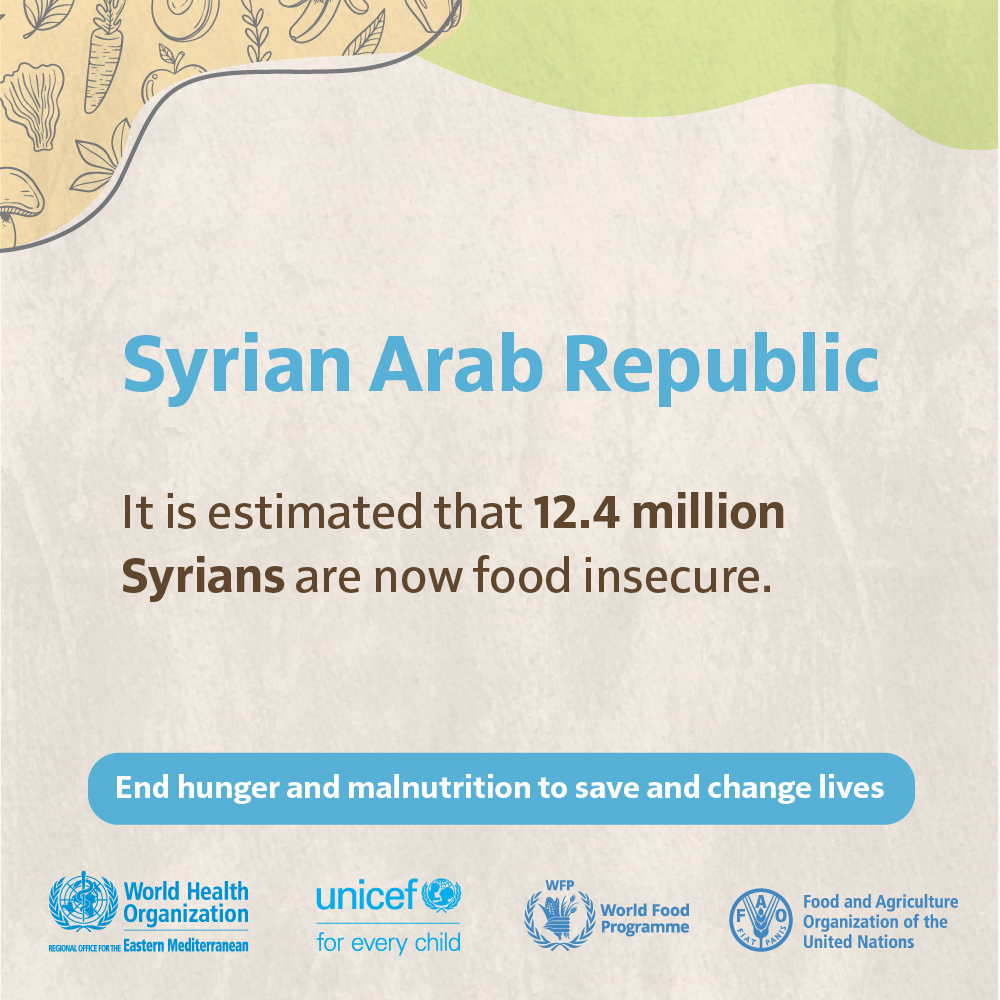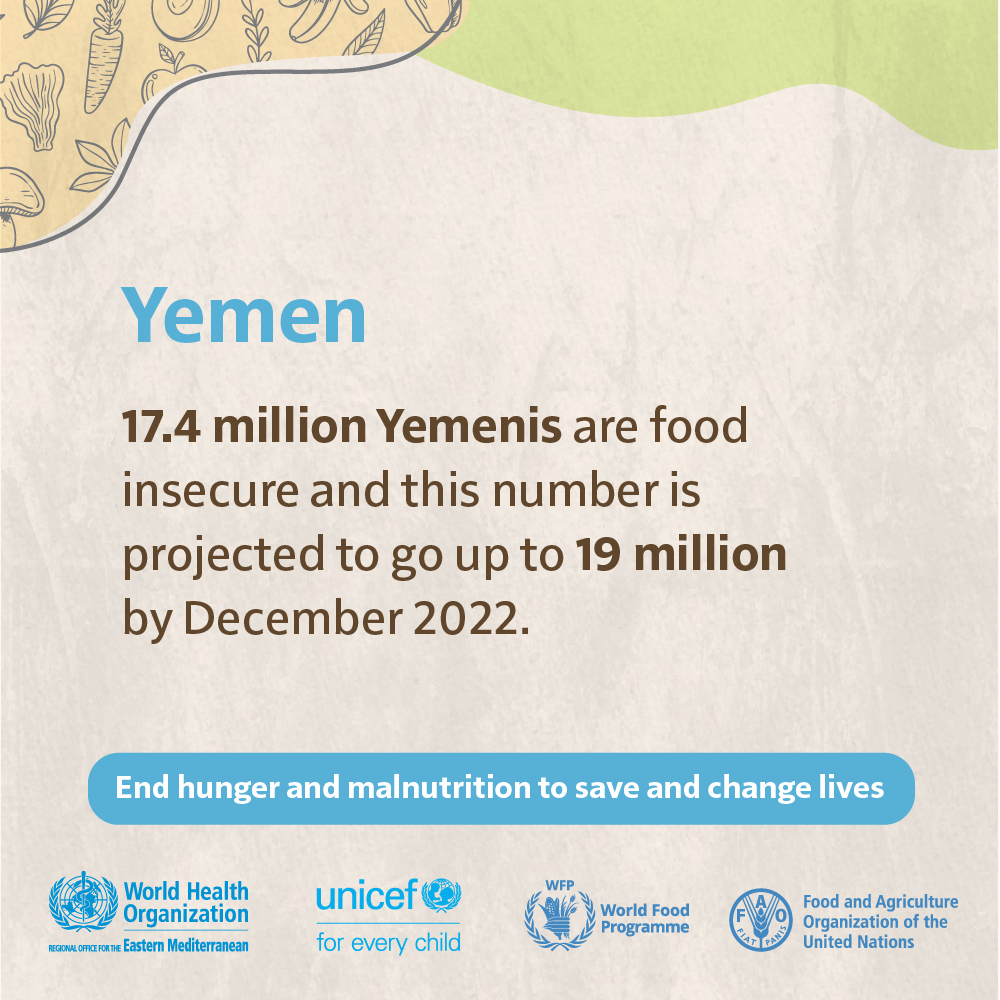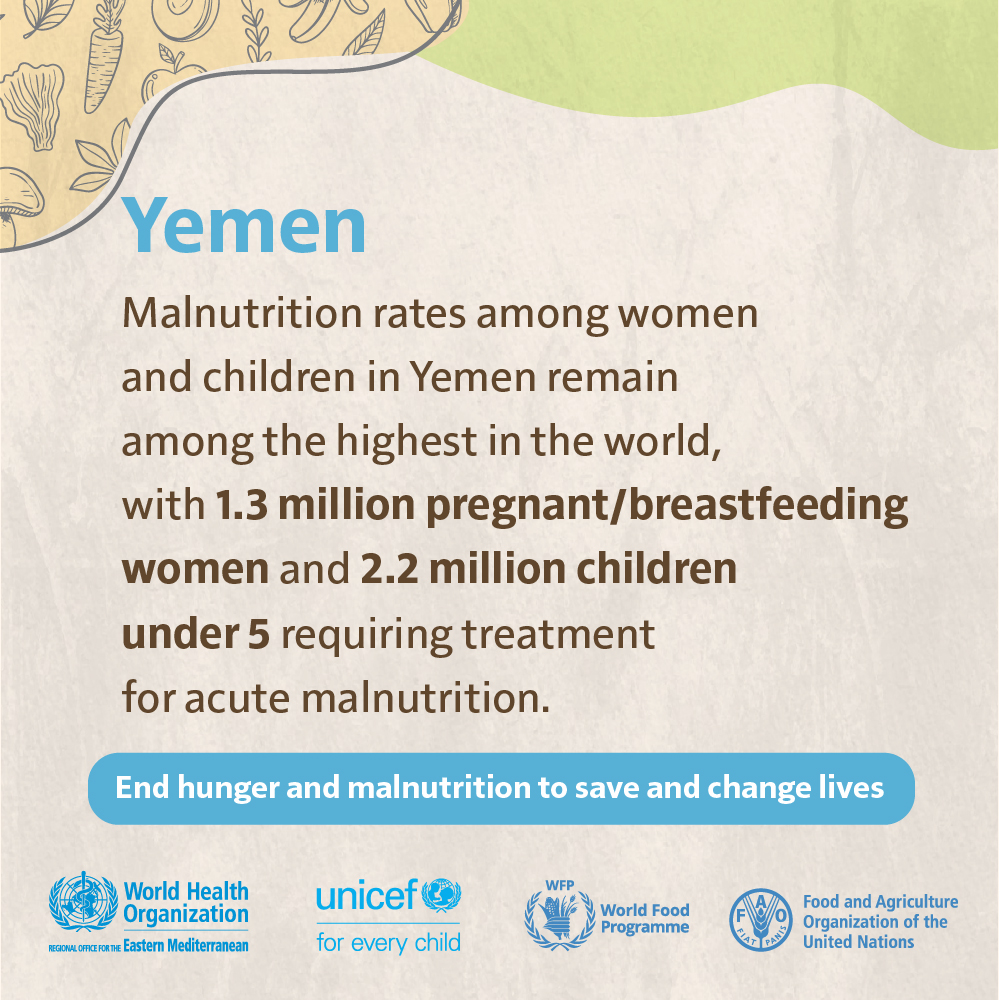
Amman/Cairo | 15 June 2022 | Today, the World Health Organization (WHO) Regional Office for the Eastern Mediterranean, the Food and Agriculture Organization of the United Nations (FAO) Near East and North Africa Region, the United Nations Children’s Fund (UNICEF) and the World Food Programme (WFP) Middle East and North Africa Region are convening a high-level meeting to accelerate action on maternal and child undernutrition. The meeting brings together senior representatives from ministries of health, agriculture, planning, social welfare and education, and a wide range of stakeholders, including academia, research institutions, civil society and regional and country office representatives from the four UN agencies.
The purpose of the meeting is two-fold: to support low- and middle-income countries facing high levels of undernutrition and food insecurity – in particular Afghanistan, Djibouti, Lebanon, Pakistan, Somalia, Sudan, the Syrian Arab Republic and Yemen – and to issue a call for action to address maternal, infant and child undernutrition in the Middle East and North Africa, Eastern Mediterranean and Arab regions based on a life-course and systems approach.
The food security situation and the humanitarian and economic crises in these countries are having detrimental effects on access to healthy diets, purchasing power and dietary patterns, and are adversely affecting the nutritional status of the most vulnerable particularly children, adolescent girls and women. The health and human crisis of the COVID-19 pandemic has further undermined food security and nutrition. Furthermore, global food prices have reached an all-time high in 2022 and the conflict in Ukraine threatens to disrupt global supplies of wheat, maize and other crops, as well as fertilizer, creating further pressure on prices and additional challenges to ensuring food security for many countries.
In Afghanistan, 1 in 3 people are hungry and 2 million children are malnourished. In Somalia, 2.7 million people cannot meet their daily food requirements today and require urgent humanitarian assistance, with more than half a million on the brink of famine. Moreover, as of January 2022, an estimated 1.4 million children are facing acute malnutrition, of whom 329 500 are likely to become severely malnourished. These figures are likely to increase as the nutrition situation deteriorates further in the drought affected areas. In Sudan, 13.4 million people require humanitarian support in 2021, including 9.8 million people who are food insecure. Moreover, about 3 million children suffer from wasting annually, with approximately 2.4 million and 600 000 suffering from moderate acute malnutrition and severe acute malnutrition respectively.
In Pakistan, the annual burden of wasting (acute malnutrition) in children under 5 is estimated at 5 million, which is above the internationally agreed upon emergency threshold. In the Syrian Arab Republic, more Syrians are struggling to put food on their tables today than ever before. It is estimated that 12.4 million Syrians are now food insecure. In Yemen, 17.4 million Yemenis are food insecure and this number is projected to go up to 19 million by December 2022. Malnutrition rates among women and children in Yemen remain among the highest in the world, with 1.3 million pregnant/breastfeeding women and 2.2 million children under 5 requiring treatment for acute malnutrition. Of these children, 538.483 are at risk of dying without treatment.
“Accelerated action is urgently needed to protect populations, especially in countries with worsening food insecurity,” says Dr Ahmed Al-Mandhari, WHO Regional Director for the Eastern Mediterranean. “I have been working closely with my fellow regional directors and representatives through our new Regional Health Alliance to address the double burden of malnutrition and accelerate progress towards the health-related Sustainable Development Goals in our regions. By aligning our agencies’ work, we can maximize out impact where it really counts – at country level – and achieve our regional vision of health for all, by all”.
“The FAO Strategic Framework calls for transformation of agrifood systems to achieve Better Production, Better Nutrition, Better Environment and Better Life leaving no one behind. This will promote healthy food environments and make nutritious and safe diets more affordable, and thus expedite combating undernutrition,” says Mr Abdulhakim Elwaer, FAO Assistant Director General and Regional Representative for the Near East and North Africa. “During this high-level meeting, we look forward to agreeing on joint actions to address maternal, infant and child undernutrition in the Near East and North African, Eastern Mediterranean and Arab regions, focusing on improvements in several major areas: nutrition situation analysis; policies and programmes to enable healthy diets; investments in essential maternal and child nutrition services; and nutrition counselling and social and behaviour change interventions”.
“With nearly 1 in 5 children stunted, and an average wasting rate of over 6% and only 1 in 3 young children in these regions receiving the diets they need to grow and develop healthily, children and women are facing a serious undernutrition crisis,” says Ms Adele Khodr, UNICEF Regional Director for the Middle East and North Africa. “This calls us to work together on urgently delivering and scaling up prevention, early detection and treatment of undernutrition, especially in countries most impacted by crises, and to address the underlying determinants of undernutrition.”
“Due to limited resources, we are having to prioritize the most vulnerable – choosing between the hungry and the starving. Many countries have completely stopped prevention of acute malnutrition activities and are forced to prioritize areas for the treatment of acute malnutrition,” says Mr Ryan Anderson, WFP Regional Director a.i. for the Eastern Africa. “The current cases of malnutrition in both children as well as pregnant and nursing women will have an impact not only now, but also on the future of these countries. WFP remains ready to support governments to accelerate action on undernutrition and take actions to prevent and treat acute malnutrition. This will require a strong collective and coordinated effort with all stakeholders.”
Note to editors
In Afghanistan, 1 in 3 people are hungry and 2 million children are malnourished. With drought, pandemic and conflict, the food security situation will continue to worsen and hunger will rise.
In Somalia, 2.7 million people cannot meet their daily food requirements today and require urgent humanitarian assistance, with more than half a million on the brink of famine. Another 2.7 million Somalis need livelihood support to keep from sliding into crisis. An estimated 300 000 children under 5 are malnourished, including 48 000 who are severely malnourished and face a high risk of disease and death.
In Sudan, a large number of displaced people, including refugees from neighbouring countries, a volatile economic situation, increased climate variability, environmental degradation, disease outbreaks, malnutrition, gender inequality and the risk of relapse back into potential conflict present significant hunger challenges. 13.4 million people require humanitarian support in 2021, including 9.8 million people who are food insecure. Sudan continues to face persistently high levels of acute malnutrition and stunting, which constitute a significant public health problem.
In the Syrian Arab Republic, families across the country are facing unprecedented levels of poverty and food insecurity. More Syrians are struggling to put food on their tables today than ever before. It is estimated that 12.4 million Syrians are now food insecure. This is an increase of 4.5 million in the last year alone and the highest number ever recorded.
In Yemen, the current level of hunger is unprecedented and is causing severe hardship for millions of people. Despite ongoing humanitarian assistance, 17.4 million Yemenis are food insecure. The number of food insecure people is projected to go up to 19 million by December 2022.
Contact
For more information, please contact:
Dr Ayoub Al-Jawaldeh, Regional Adviser for NutritionWHO Regional Office for the Eastern Mediterranean, Cairo, Egypt
Phone: +20 106 921 3696
Email:
Tamara Nanitashvili, Food Systems and Nutrition Officer
Food and Agriculture Organization of the United Nations (FAO) Near East and North Africa Region
Phone: +20 101 172 1012
Email:
Salim Oweis, Regional Communications Officer
United Nations Children’s Fund (UNICEF)
Phone: +962 79 867 4628
Email:
Sabah Barigou, Regional Adviser for Nutrition, HIV and School Based Programm
World Food Programme (WFP) Middle East and North Africa and Eastern Europe Region
Email:








